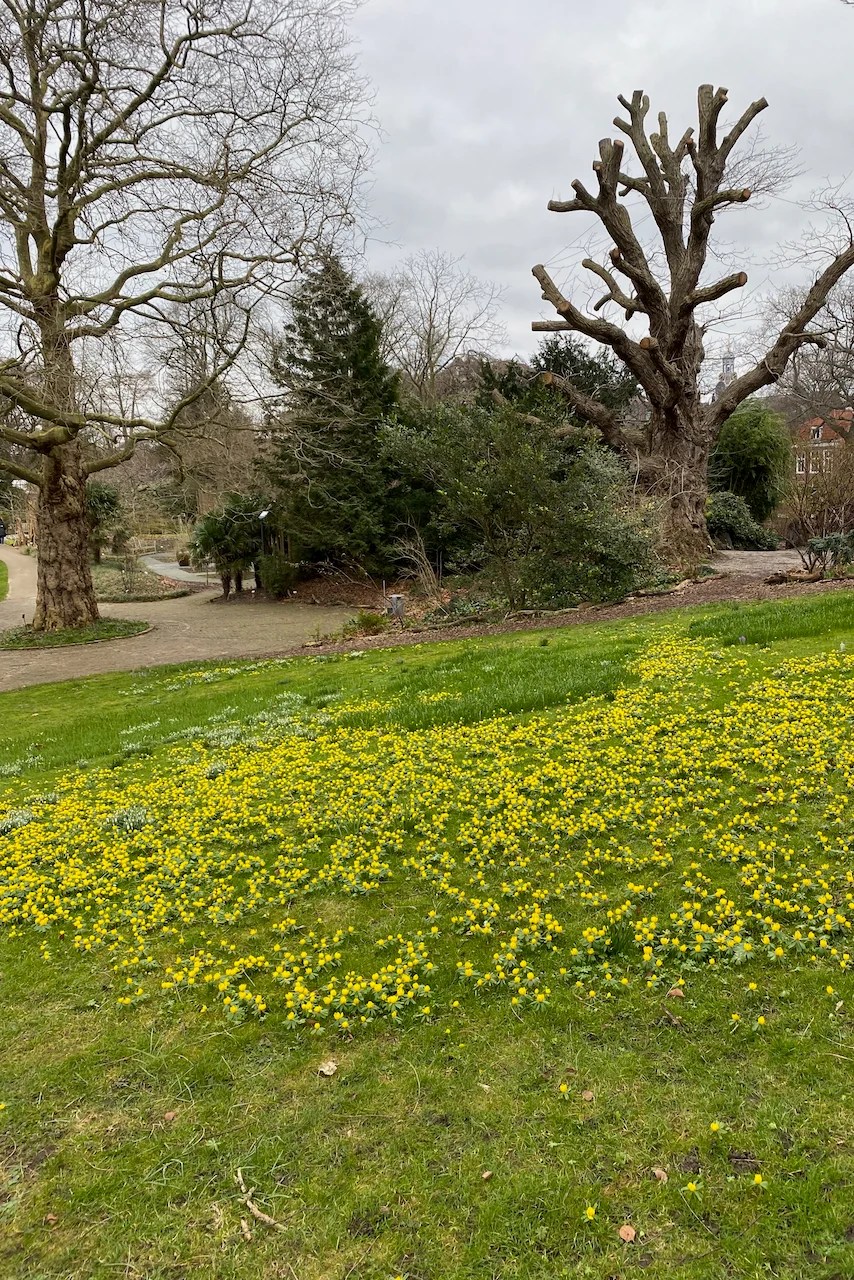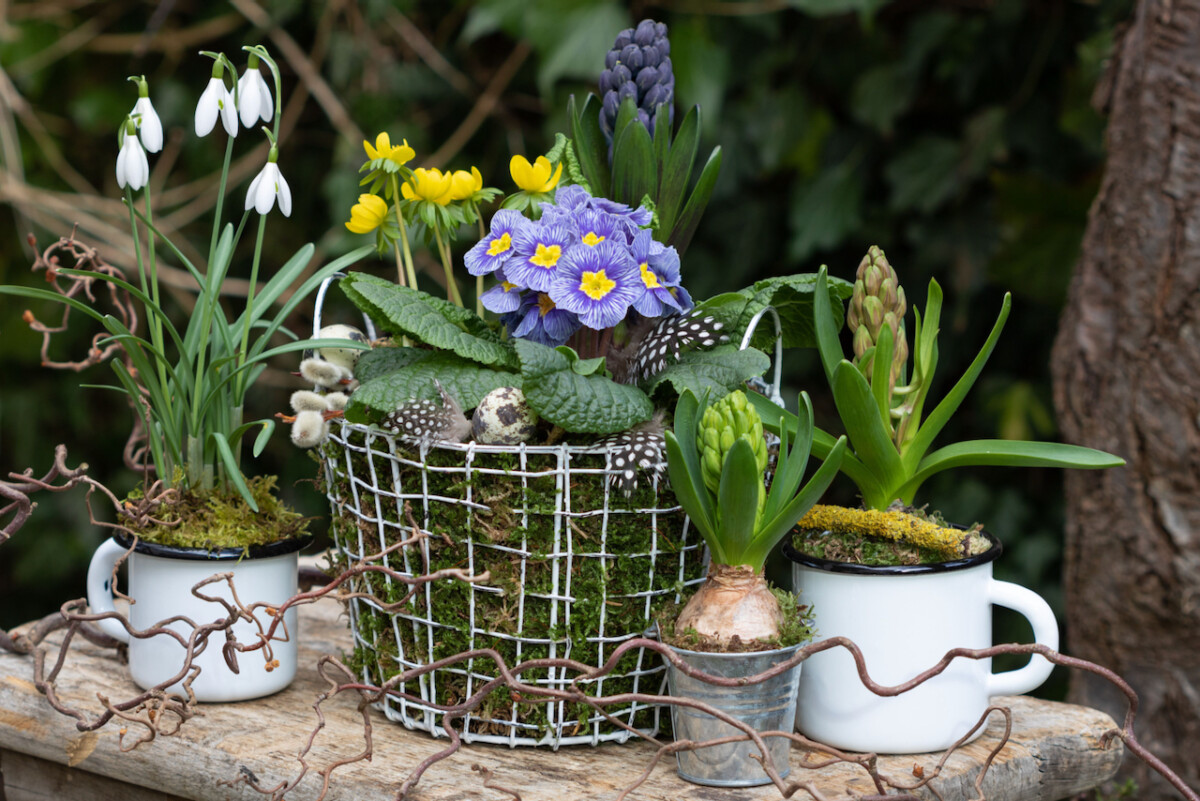I call up first regard a thick carpet of wintertime aconite while we were visiting a botanical garden a few age ago . Yes , we ’re the form of people who visit botanic garden in winter . strong and succulent green glasshouse do wonderment for the soul on a gray February good afternoon .
But that fussy good afternoon , the temptingness of the greenhouses was only half the fun . The thrill and inflammation of seeing all these cheerful flowers , resembling century of tiny little suns peering at the sky , was a visual sense for winter - weary eyes .
Up to that point in time , I had only seen wintertime aconites in potted arrangement . They are very pretty flowers in spring containers , but when they organize a sea of chickenhearted sunshine , it really makes for a outstanding hatful .

The winter aconites at the botanical garden that I mentioned above.
Since then , I discovered a few more reasons why we should all reckon growing winter aconites in our gardens :
1. Winter aconites bloom really early in the year.
Winter aconites ( Eranthis hyemalis ) , are one of the first spring electric light to bloom . Depending on the soil and the exposure , these members of the buttercup house ( Ranunculaceae ) will sometimes poke their heads out even before wood anemone . In fact , you will in all probability start noticing them in previous January and early February .
Their timing could n’t be more perfect . It coincides with the awakening of other spring bulbs , such as snowdrops , cyclamen and crocuses . But unlike them , winter aconites spring up blossom first , only then followed by a green skirt of leafage .
Another affair I care about them is that the gilded chalice of the winter aconites open up at the same fourth dimension as winter jasmine ( Jasminum nudiflorum ) and forsythia , two bush that add the same kind of cheery lambency to the drab winter garden .

2. Winter aconites perennialize really well.
Eranthis is a herbaceous perennial that grows from tubers . We can embed the Tuber in the fall and get flowers only a few months later . aconite make splendid additions if you ’re looking to naturalise bulbs in your lawn . For a fuller feel , I would commend planting the tuber in clumps .
By mid - give , both the flowers and the leafage are depart ; then the whole plant retreats underground . It will re - emerge again the following spring without any supererogatory work needed on our part .
You may have heard that aconite are invasive . However , the winter aconite is not true aconite , such as helmet flower and wolf’s bane ( part of theAconitumgenus ) , but a member of theEranthisgenus . So while it does reproduce reliably , it ’s easy to keep on top of the spread by simply pulling out the rhizome or dividing them and replanting them .

The winter aconites at the botanical garden that I mentioned above.
By the way , if you ’re concerned in perennializing bulbs in grass , have a look at this article I wrote .
3. Winter aconites are one of the first flowers to feed pollinators.
There ’s not much around in February to feed the pollinators that issue forth out of dormancy early . Winter aconites , with their yellow cup - shaped open flower , are one of the first plants to offer pollen to insects in previous wintertime and early spring .
Ladybugs ( one of the first beneficial bugs to emerge from the winter slumber ) and early bee are big fans of winter aconite .
4. Winter aconites can handle poor soil.
wintertime aconite are native to the calcareous forests of Turkey , the Balkans and Southern Europe . They ’ll grow well in poor dirt , although if you have soil rich in clay , it may need some meliorate with fresh compost .
Winter aconite have shallow roots and the tubers stay just below the open , but they do n’t involve any extra protection . If you plant them under deciduous trees ( see below ) , then using the fall leaves as natural mulch will figure out really well to keep the rhizomes happy in the off - time of year .
5. They love growing under trees and shrubs.
wintertime aconites are what ’s visit a “ springiness ephemeral ” plant . That mean it has adapted to coming out in flush when the consideration are just correct , then retreats back and postponement for the same atmospheric condition again next class .
In the case of Eranthis , this curt period of time is when the soil is still wet and fairly chilly , but the day are getting longer and there may even be the possible action of Sunday . At the same metre , the trees are not yet in leaf , which means plenty of sparkle can reach the winter aconites through the bare canopies all the way down to the woodland floor .
That ’s why aconites will usuallythrive under Tree and shrubs , where not much else does . They need a speckle that outride comparatively cool and moist in the summer .

Winter aconites send out their flowers first. The foliage unfolds soon after.
6. Winter aconites look beautiful in containers.
This one is for those of us who do n’t have a consecrated slur to perennialize aconite . When we buy an arrangement , we ’re unremarkably buyingEranthis cilicica . They look similar toEranthis hyemalis , but they blossom more or less later in the season ( but still very early in springiness ) .
you may couple them with snowdrops , Cyclamen purpurascens , hellebores and wintertime primroses ( Primula vulgaris ) for a spot of color on the balcony or the deck .

You can naturalize aconites in your lawn.

Winter aconites are an important source of pollen for early beneficial insects.

Winter aconites bloom at the same time as cyclamen. Fallen leaves turned into mulch that keeps them protected.

You can grow winter aconites under trees, where not much else grows.

Snowdrops, primroses, pussy willow and hyacinths make a wonderful early spring arrangement.